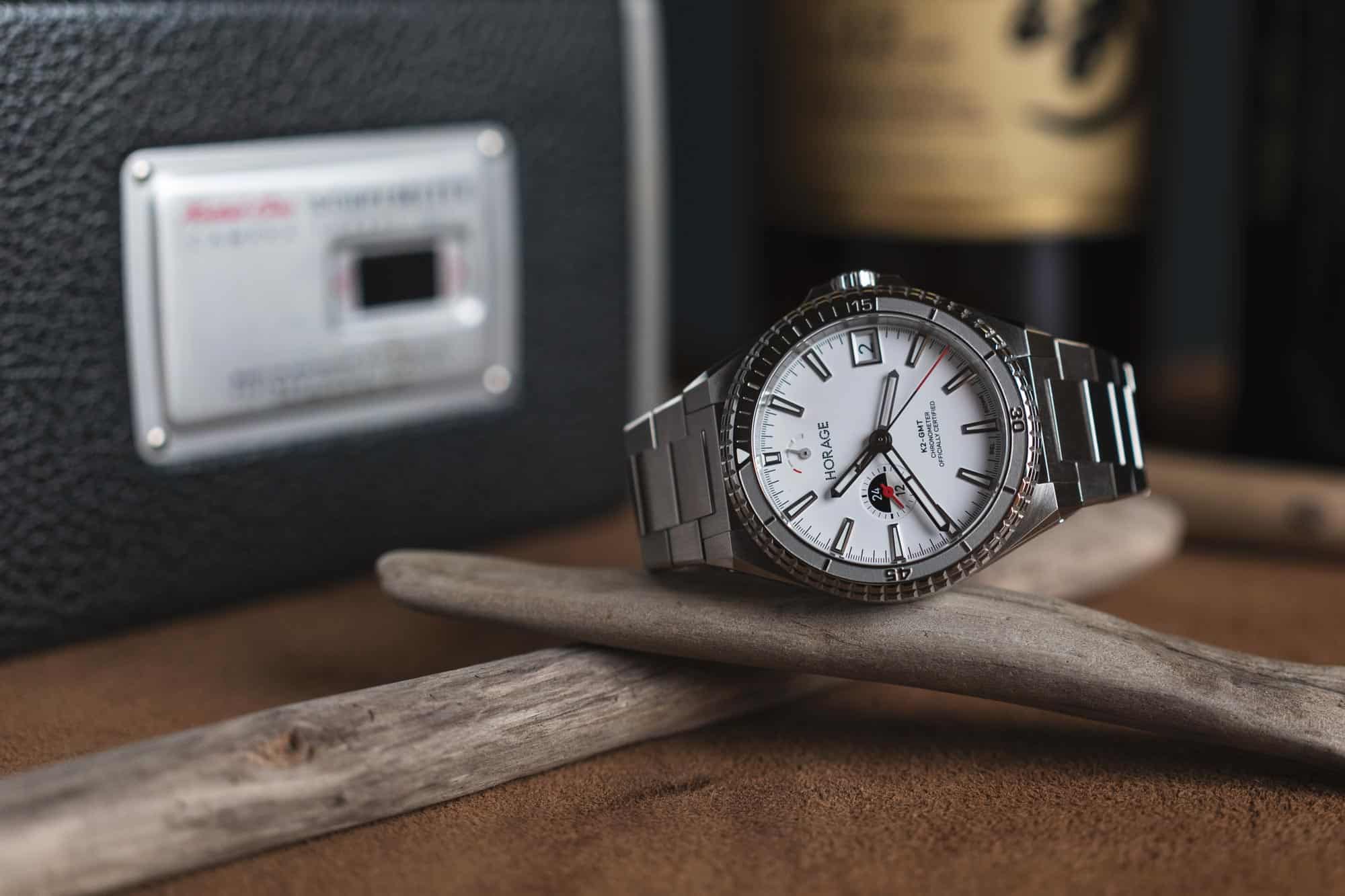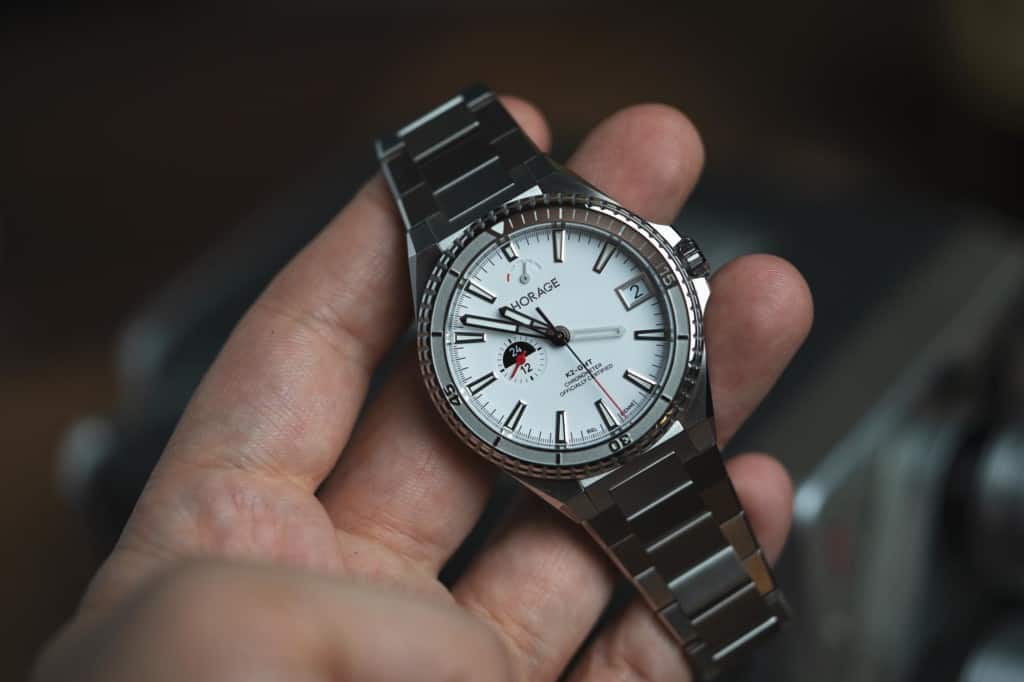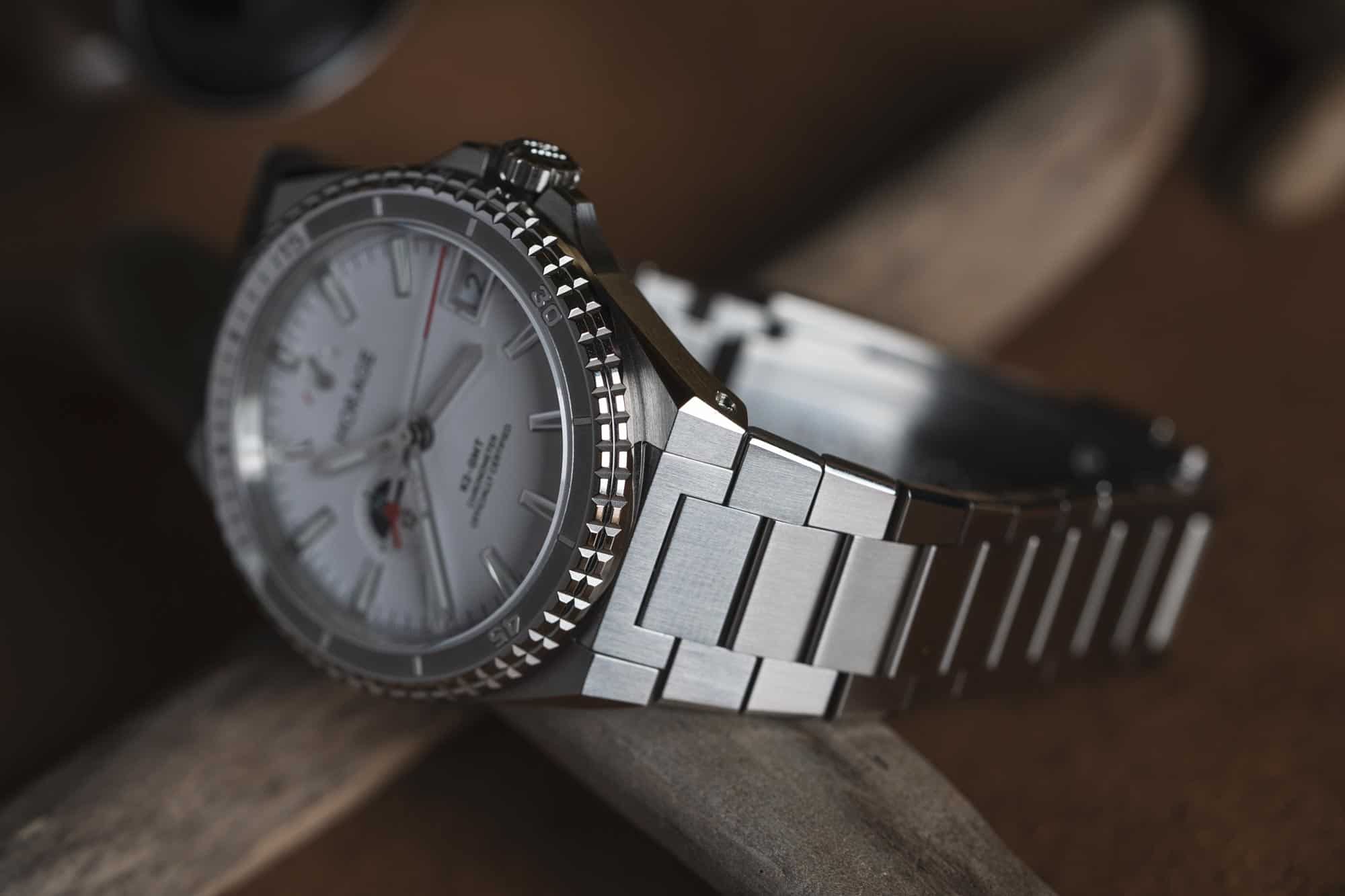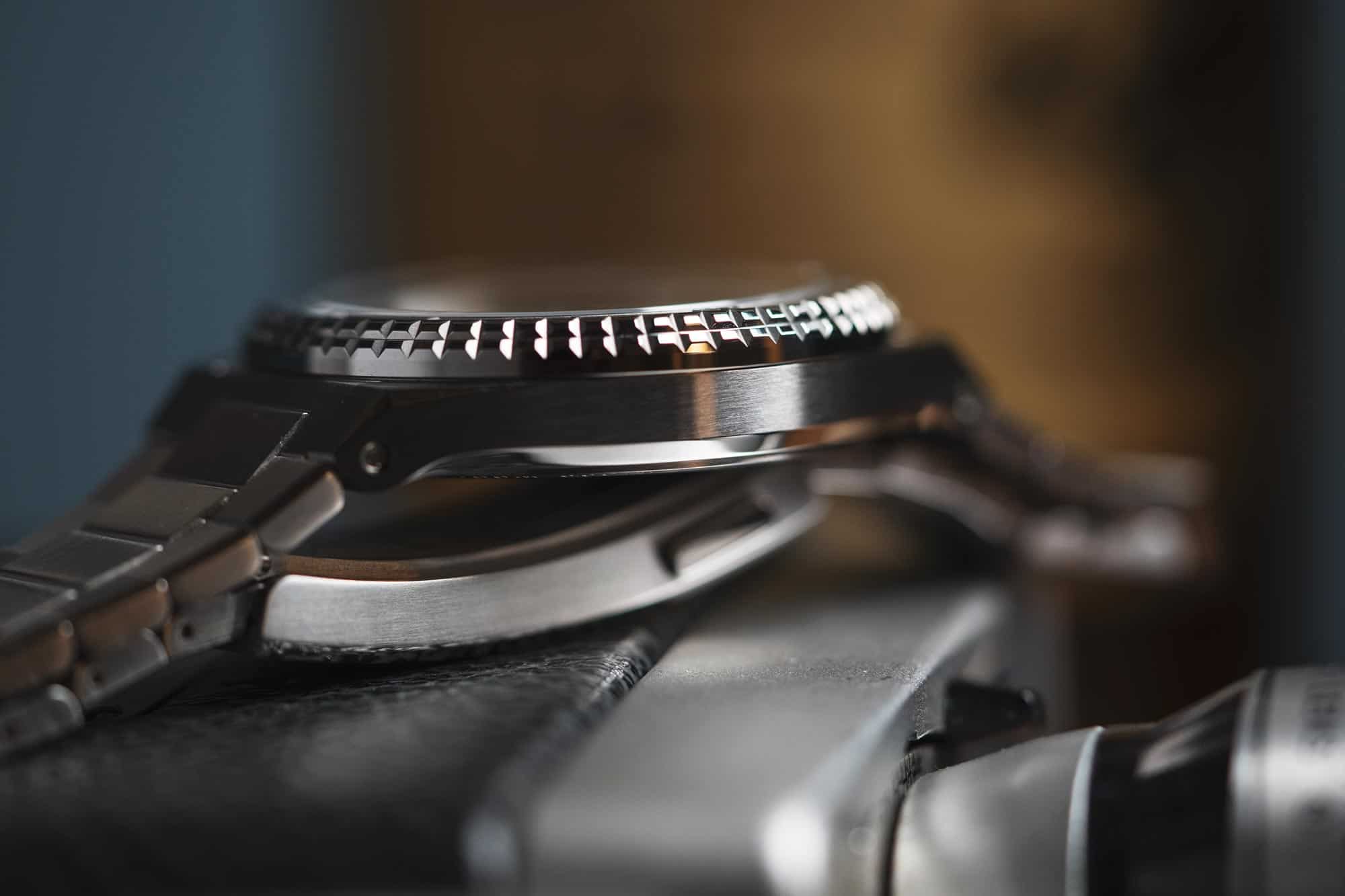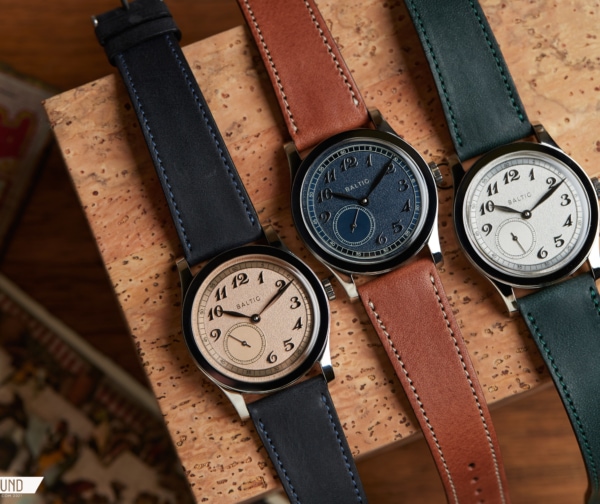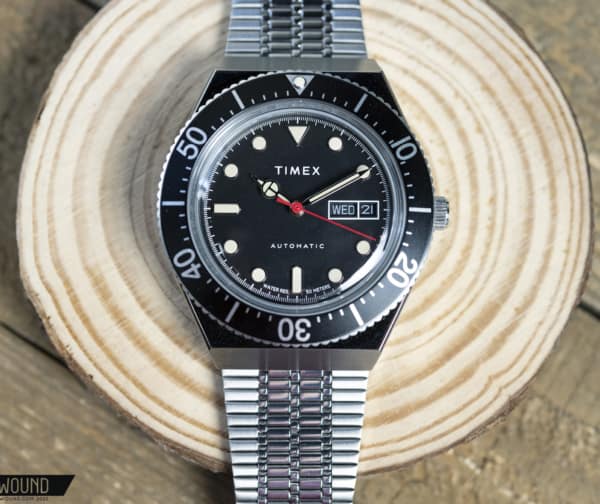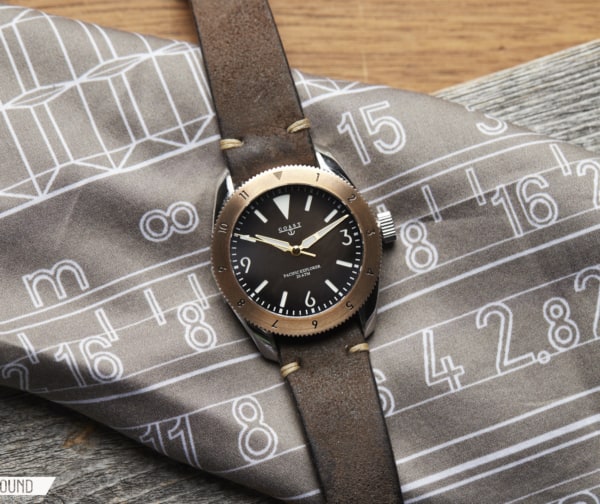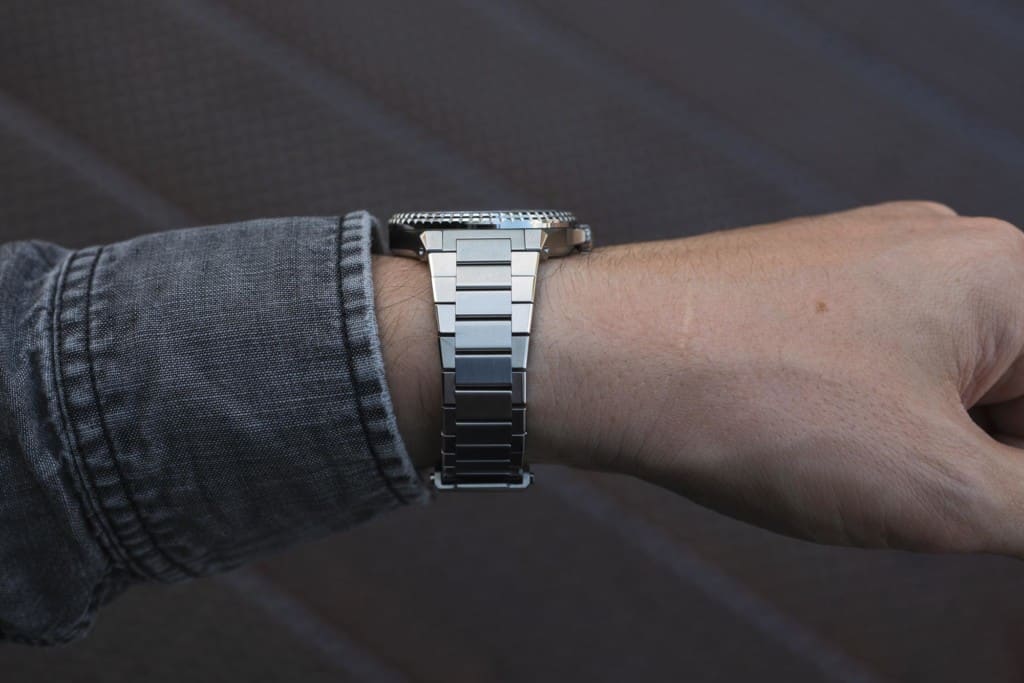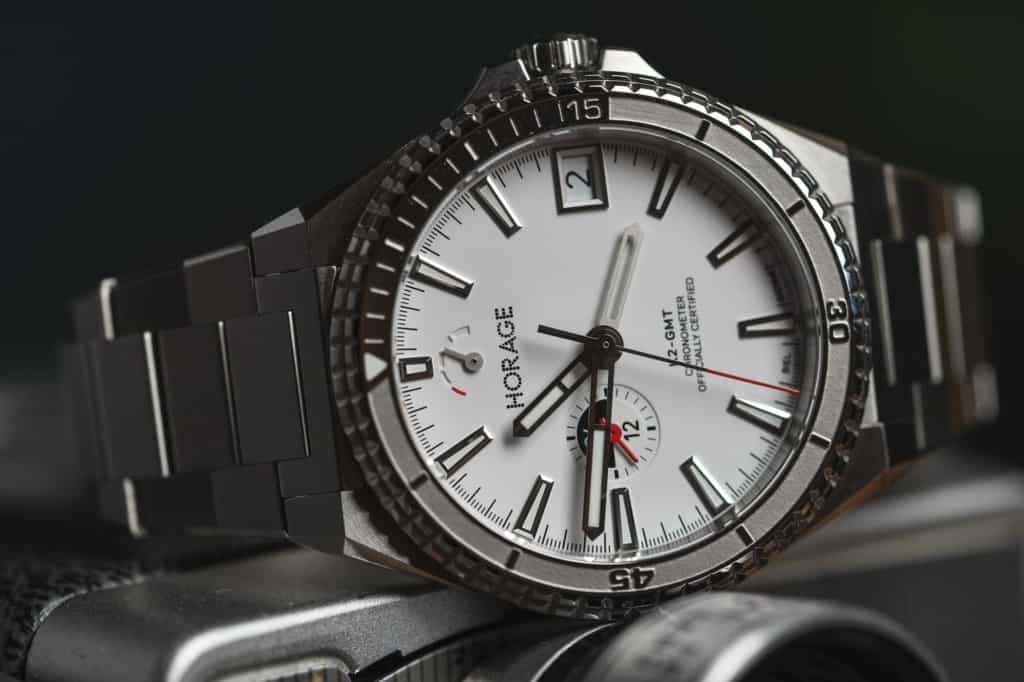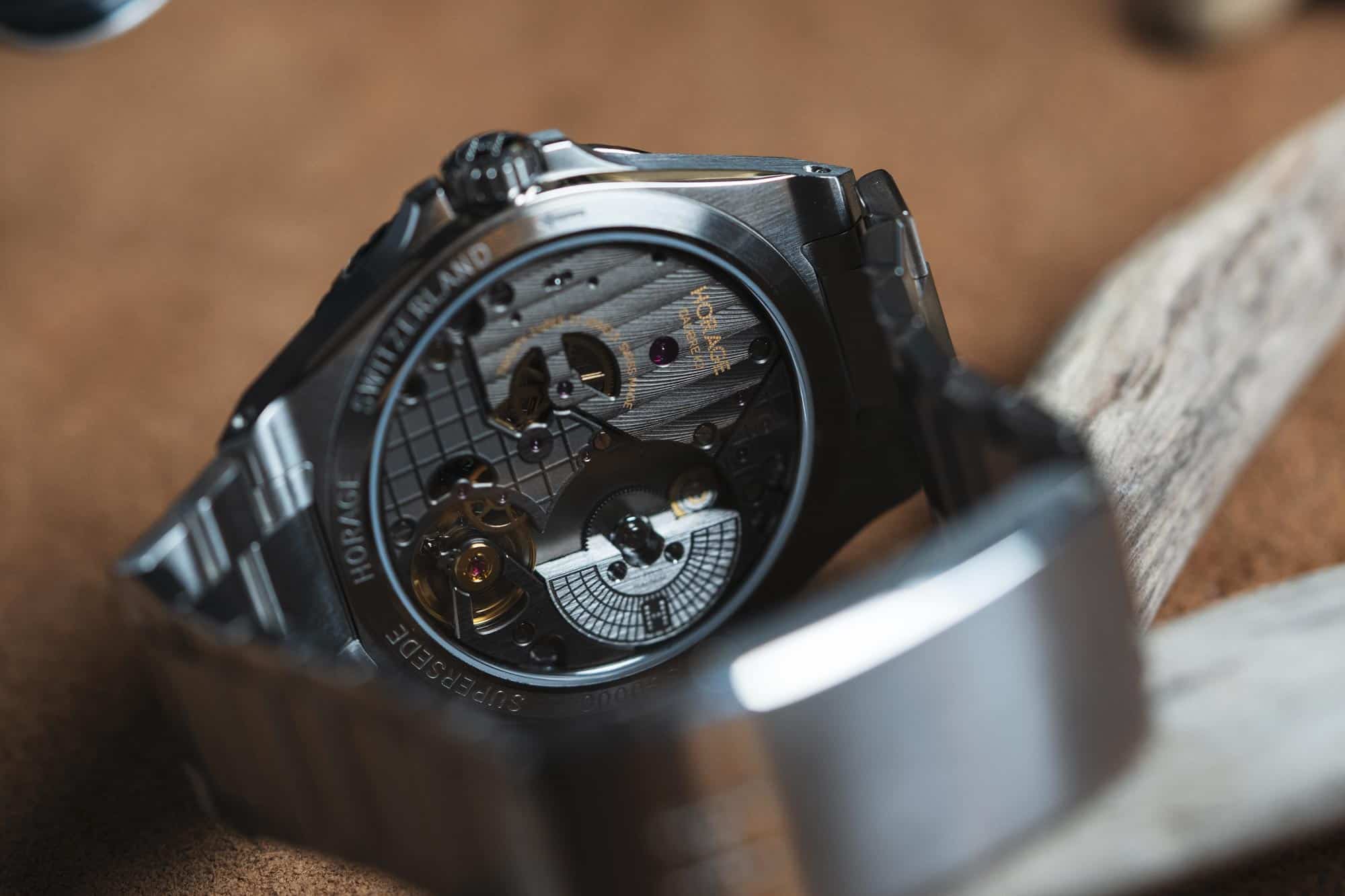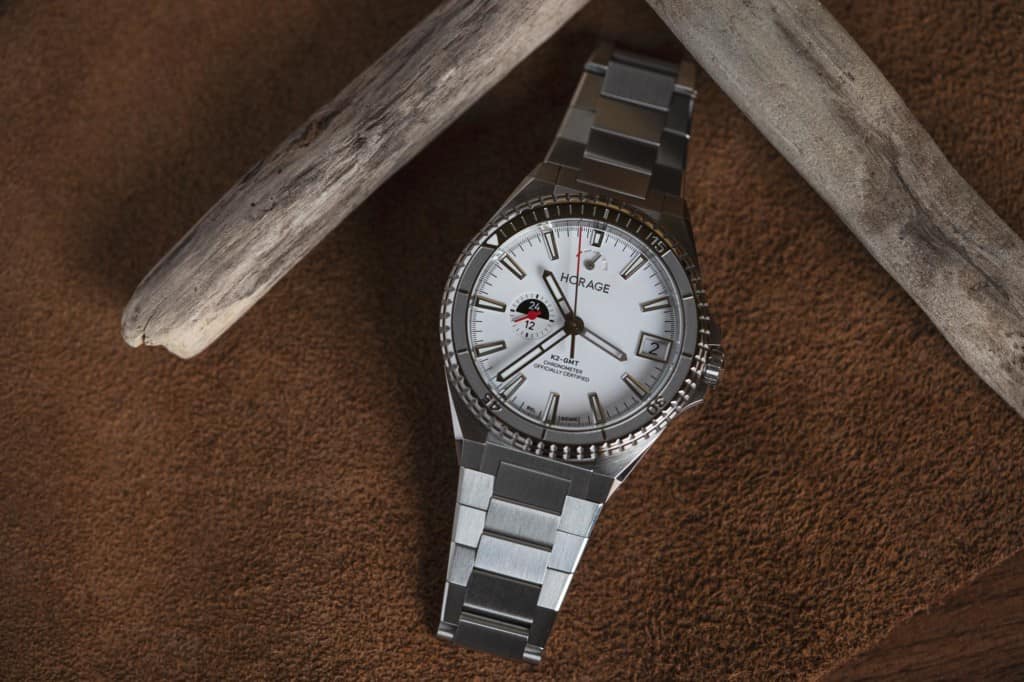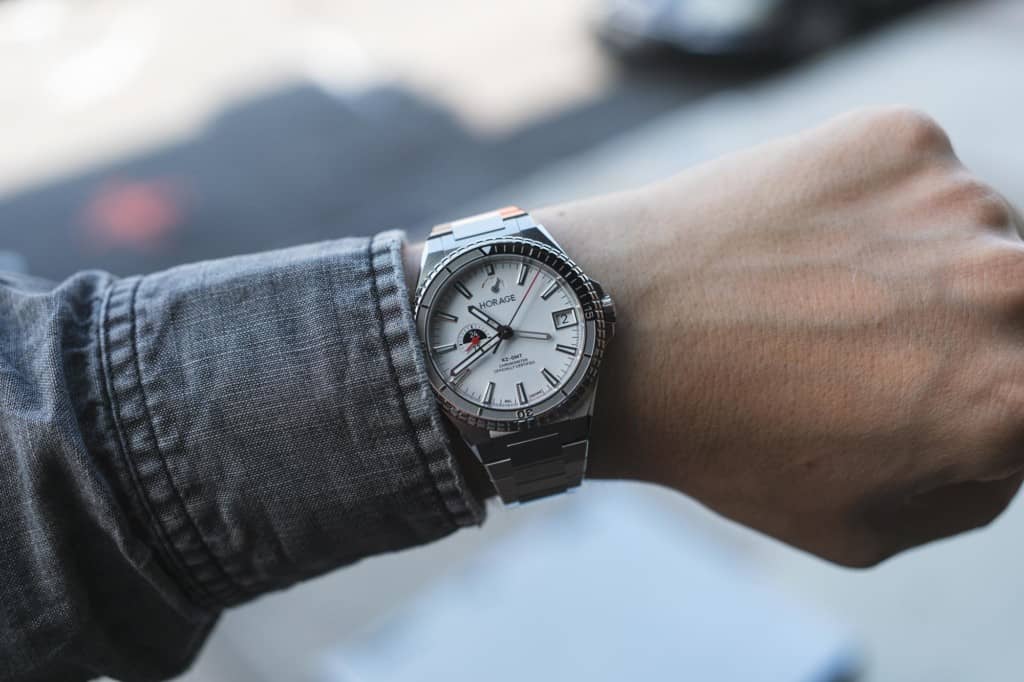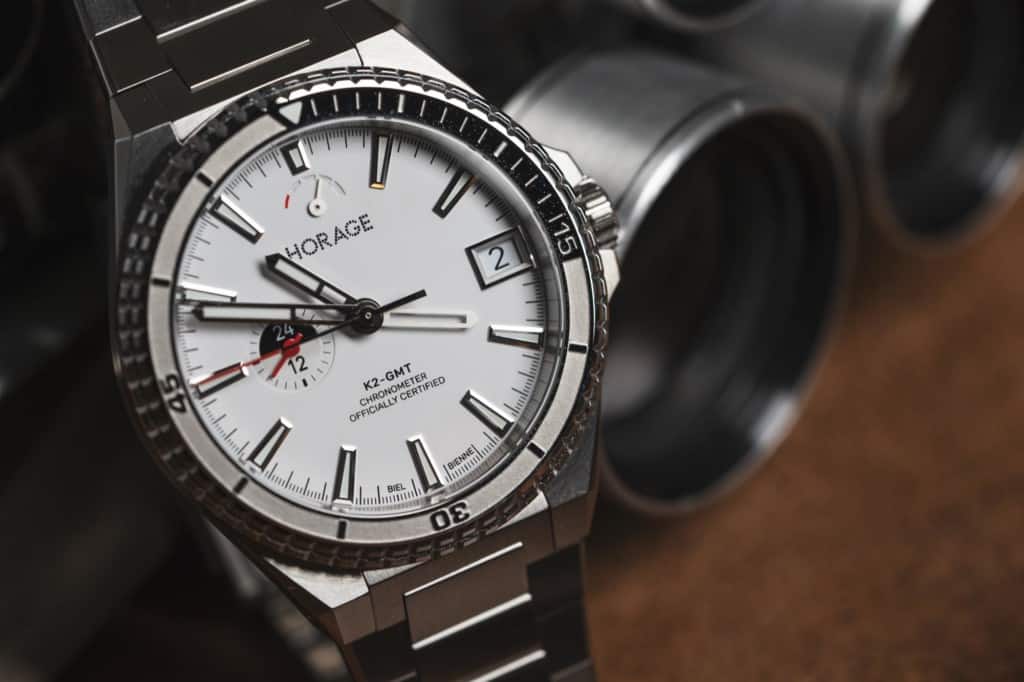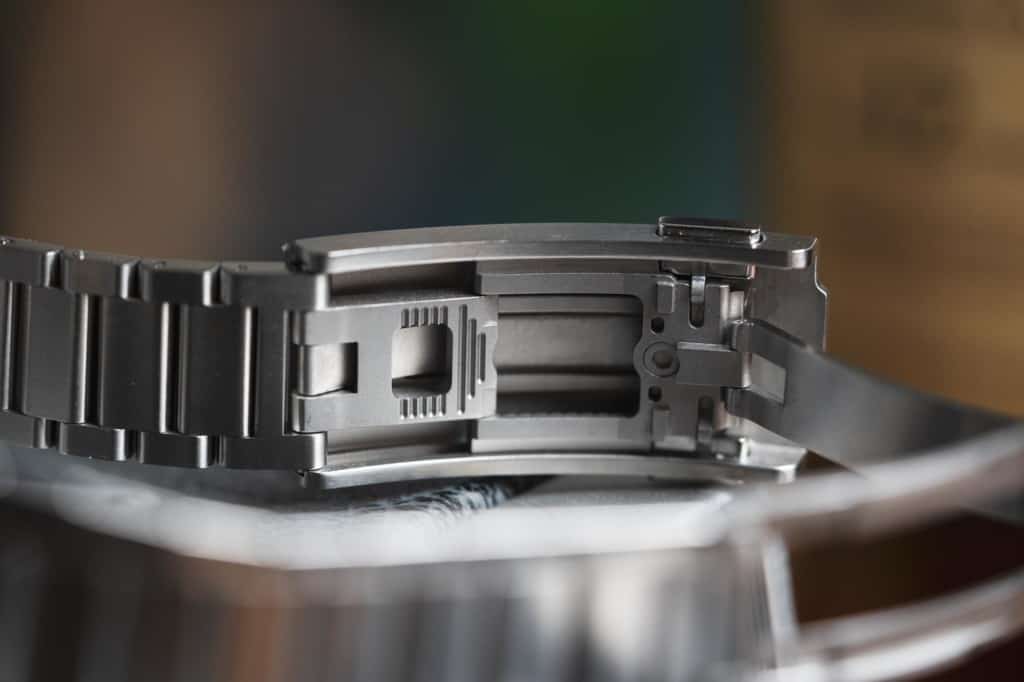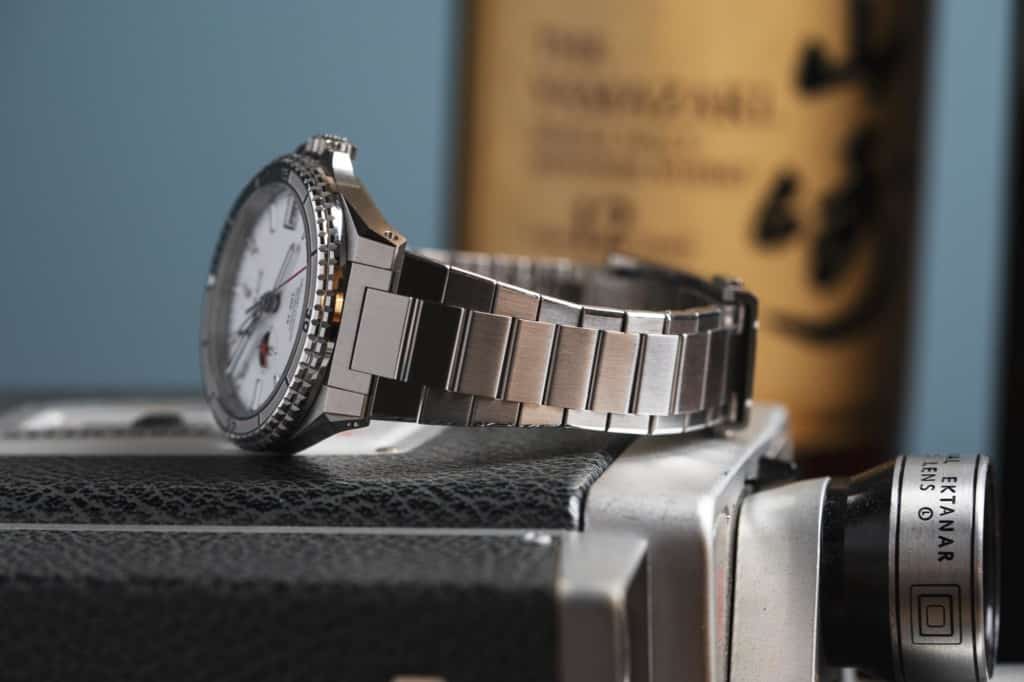New movements get me excited. That sounds weird, let me try again. New calibers pique my horological curiosity. Better. Ok, when Horage announced the K2 caliber a few years ago, I was pretty blown away by their claims. A fully novel micro-rotor design at 2.9mm thick (base), with 72 hours of power reserve, silicon hairspring and escapement, chronometer-level accuracy, and “approachable” pricing? Sounds like a dream come true. They also made it modular, allowing for easy customization with some complications while only increasing the movement’s thickness slightly.
At the announcement, Horage sought out eight brands to back the movement in a sort of B2B fundraising, which presumably succeeded*. Shortly thereafter Horage announced the first watch to feature the K2, the Supersede, under their own brand name. A showcase of their movement’s capabilities, as well as their own as a standalone watch brand, the Supersede featured a fully kitted out K2 complete with “true” GMT (more on that later), 24-hr hand, power reserve, and date, all within a less than 10mm thick case made out 904L steel. They had our attention.
*update: we have learned that Horage changed courses, and did not pursue the eight brand support
As always with Swiss luxury watches, the term “affordable” has to be taken with a grain of salt, but the clincher was that the Supersede, the watch described above, had a preorder price of 4500 CHF, and full retail of 6500 CHF (about $4,700 and $6,800 at time of writing). In comparison, the Hermes Slim d’Hermes, a three-hand Swiss-made micro-rotor with a Vaucher caliber starts at over $7k. So, not “affordable” in the common sense of the word, but in terms of the competition, and certainly value-packed considering the complications.









 Featured Videos
Featured Videos




